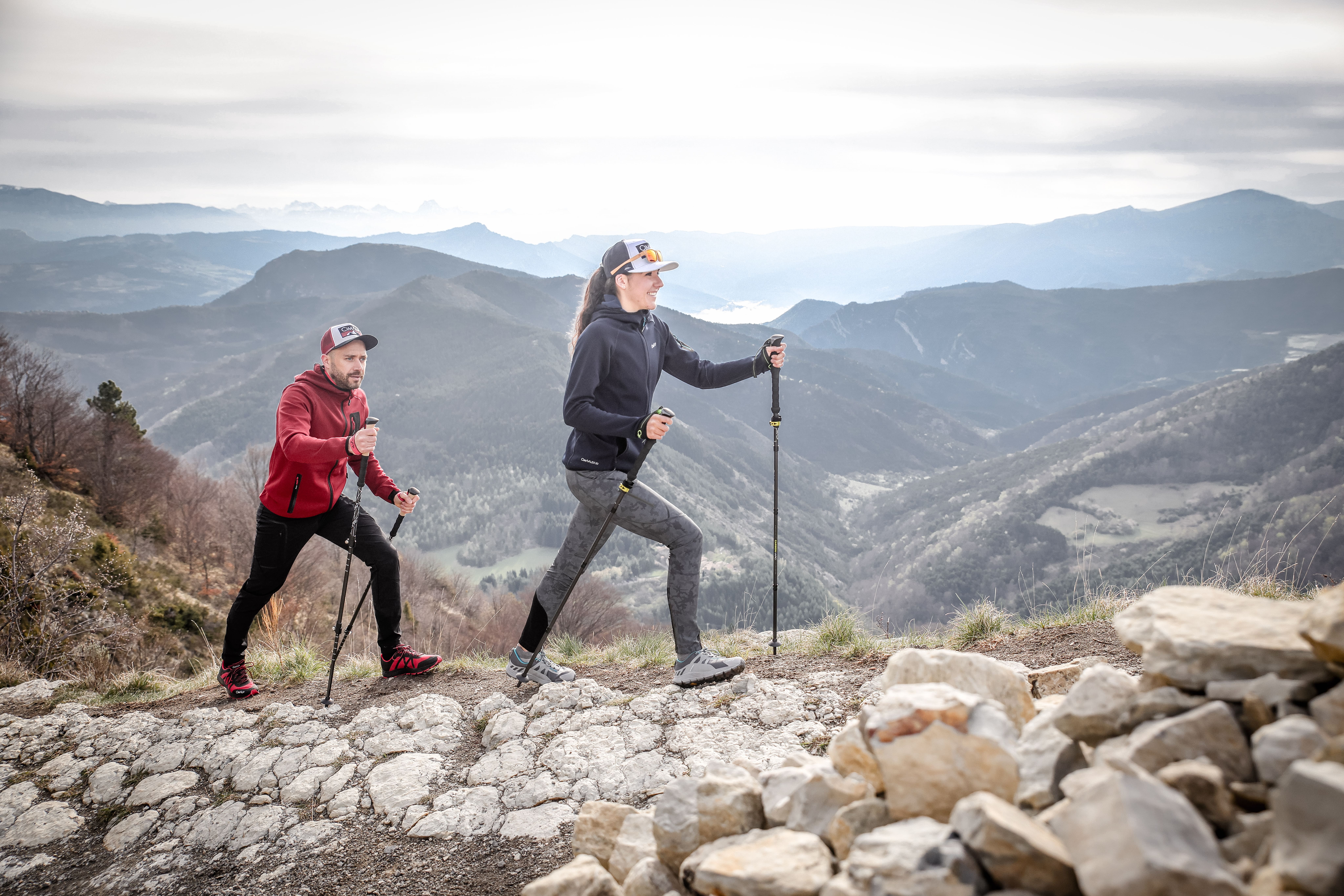Aluminium hiking and trail poles
It is often said that aluminium alloys represent a good compromise between robustness and lightness, for an optimum price-quality ratio. Let's take a look at the advantages and characteristics of aluminium hiking and trail poles step by step.

In order to enjoy all the benefits of using walking poles, it is important to choose them correctly and to think carefully about all the parts that make them up. From the handle to the tip, via the shaft and the straps, each of the parts that make up a hiking pole has a precise role to play, and for it to do its job properly, it is essential that the hiker chooses the one that is best suited to his or her practice, needs and level.
And the tube is no exception to the rule. What are the characteristics of telescopic, fixed and folding poles? What are the advantages of single or multi-strand poles? Which system suits me best, screw or clip? These are all questions that the hiker must ask himself. When it comes to pole composition, the choice is often between aluminium and carbon. In this post we will focus exclusively on the advantages and characteristics of the aluminium alloy.
Aluminium poles: for which sport?
Nordic walking:
Aluminium poles are absolutely contraindicated for Nordic walking. Why not? Because they do not absorb vibrations and do not absorb the impact between the tip and the ground. In Nordic walking, the poles are in contact with the ground at a regular and sustained rhythm. The walker is therefore likely to quickly perceive a feeling of discomfort, discomfort, pain, and may even injure himself, particularly suffering from tendonitis.
Hiking and trail running:
When hiking and trail running, the support can sometimes be heavy and the poles are more easily subjected to shocks of all kinds. It is therefore important that the tube is stronger than for Nordic walking and can withstand a lot of pressure. For this reason, aluminium is an excellent choice. Aluminium is strong and almost never breaks, it can bend but you can be pretty sure it won't break, which makes it particularly durable. Beware, not all aluminium rods are created equal. In recent years, Aluminium 7075 has proven itself to be extremely durable and a good compromise between strength and lightness.
Aluminium poles: weight
Trail and hiking poles must be strong but also light. Needless to say, if you want to perform better during a race or trek, go faster and further, your poles must be as light as possible. The weight of a pair of aluminium trekking poles generally varies between 500 and 650 grams, or between 250 and 325 grams per pole. Aluminium 7075 poles are generally the lightest, a good aluminium pole will hardly exceed 280 grams. Of course the weight also depends on the storage system and the handle, among other things.
Aluminium poles: ski touring
Aluminium has the advantage that it does not rust, which is a great advantage. Rain or snow will not damage your aluminium poles. This is why you can use them in summer as well as in winter. When skiing or snowshoeing, for example, all you need to do is fit them with winter washers, which are larger in diameter and will allow your poles to sink less into the snow. The snow absorbs vibrations, so you don't have to worry about your shoulder or elbow muscles.
